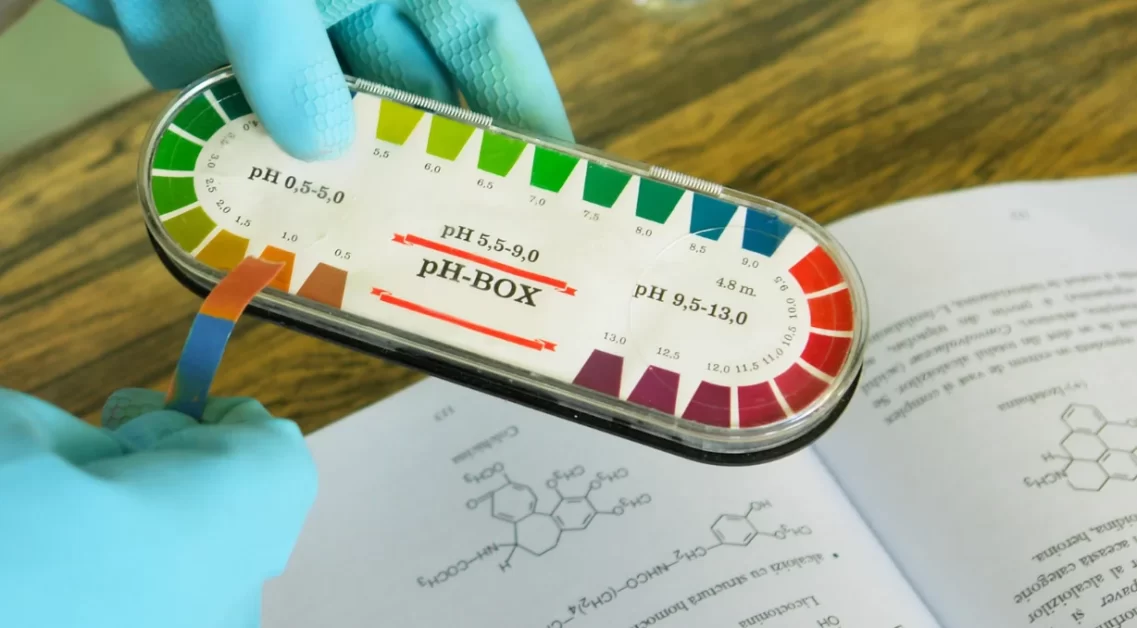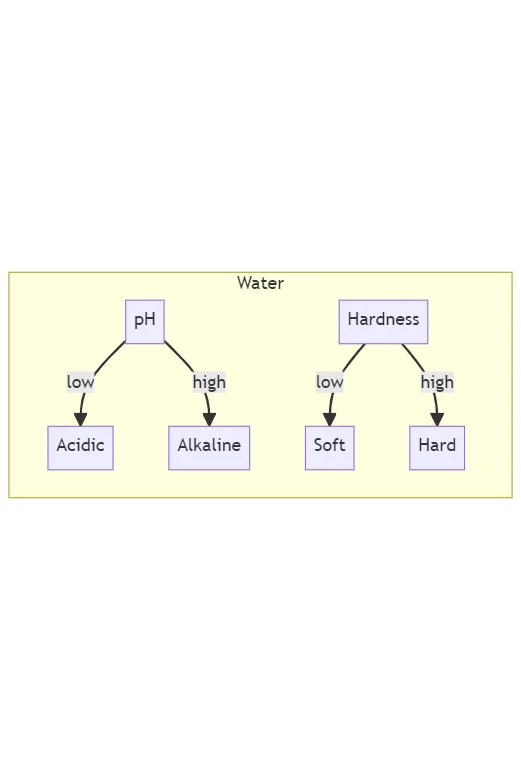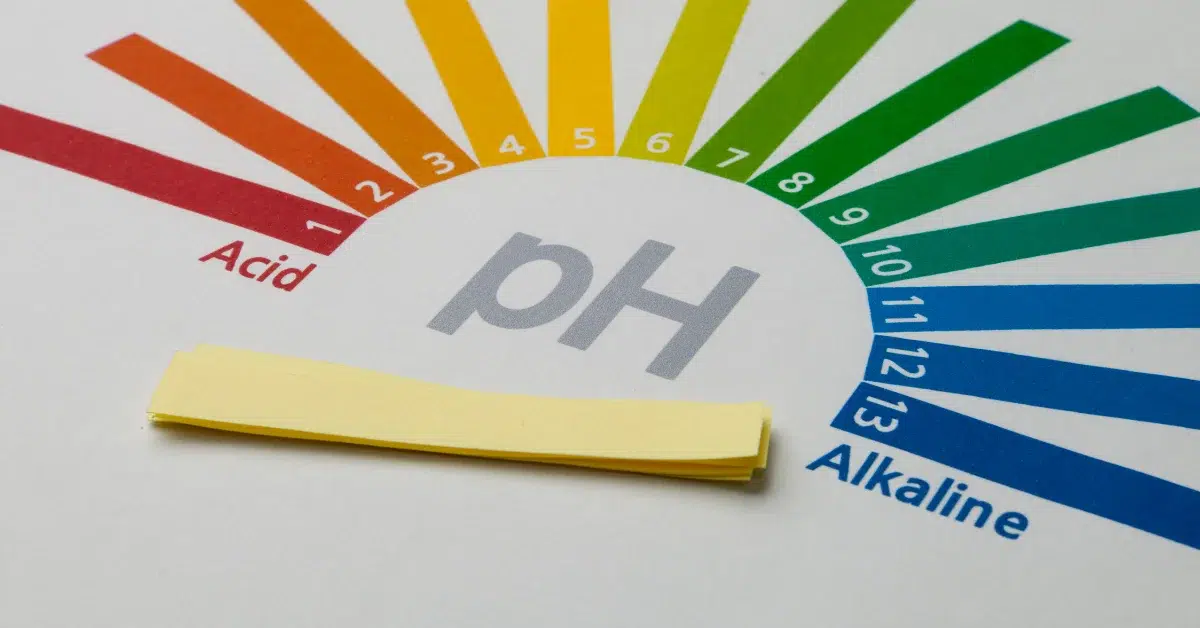How to Raise pH in Hot Tub Naturally: Skin-Friendly Solutions
To naturally raise the pH in your hot tub, try adding a small amount of baking soda. It’s gentle, easy to use, and safe for most tubs. Start with one tablespoon per 100 gallons, then test the water. Give it a little time to circulate before adjusting again if needed.
Understanding pH Levels in a Hot Tub
pH measures how acidic or basic your hot tub water is, on a scale from 0 to 14. The ideal range is between 7.2 and 7.8. If it dips too low, the water becomes acidic, which can corrode parts, irritate skin and eyes, and reduce sanitizer effectiveness.
If it gets too high, you might see cloudy water, scaling on surfaces, and a weaker disinfectant.
Keeping pH balanced helps your water feel comfortable, protects your equipment, and makes your sanitizer (like chlorine or bromine) work the way it should. Test your water regularly, at least 2 to 3 times a week, and adjust as needed.

Why is it Important for Your Hot Tub?
A balanced pH ensures that the water is safe for soaking, protecting both your skin and the hot tub’s components. If the pH is out of balance, it can lead to discomfort, equipment damage, and difficulty maintaining water clarity.
Ideal pH Range for Hot Tubs
For most hot tubs, the ideal pH range is between 7.2 and 7.8. This range is slightly basic, which helps prevent corrosion of the hot tub’s internal parts while also being gentle on the skin. Staying within this range ensures that your water remains safe and clear.
Check out our article about Unlock the Secrets of the Best Hot Tub Additives for Dry Skin.
Signs of Low and High pH in Hot Tubs
Signs of Low pH in a Hot Tub
When the pH level drops below 7.2, the water becomes more acidic. Signs of low pH include skin and eye irritation, corroded metal parts, and a sharp, unpleasant smell. You might also notice that your hot tub cover and other surfaces start to deteriorate faster.
Signs of High pH in a Hot Tub
If the pH level rises above 7.8, the water becomes more basic. High pH can lead to cloudy water, scaling on the hot tub’s surfaces, and reduced effectiveness of sanitizers like chlorine. Your skin may feel dry or itchy after soaking, and the water may have a slimy texture.
Why Do Hot Tubs Suffer From pH Imbalances?
What Causes Low pH in Hot Tubs?
Several factors can cause the pH in your hot tub to drop. Frequent use, adding too much sanitizer, or introducing acidic substances like rainwater can all lower the pH. Additionally, certain cleaning products or body oils can contribute to this imbalance.
What Causes High pH in Hot Tubs?
High pH levels can result from using water that is naturally alkaline, adding too many pH increasers, or using products that raise the water’s pH. Improper maintenance or using the wrong chemicals can also push the pH too high, leading to the issues mentioned earlier.
Check out Hot Tub Water Maintenance.

For more about Using Vinegar And Baking Soda In Hot Tub.
How to Raise pH in a Hot Tub Naturally
Balancing the pH in your hot tub is important for keeping the water safe and comfortable. If you prefer natural methods, there are ways to raise the pH without relying on harsh chemicals. Here’s how you can do it effectively.
Raising pH Without Affecting Alkalinity
One challenge when raising pH is doing so without significantly increasing the alkalinity. Alkalinity acts as a buffer for pH, so changes to one often affect the other. However, there are specific methods that can help you adjust the pH while keeping alkalinity stable. Baking soda, for example, can be used carefully to focus on pH adjustment.
How Much Baking Soda to Raise pH in a Hot Tub?
Baking soda, or sodium bicarbonate, is a common household item that can be used to raise the pH in your hot tub. Generally, adding 1.5 ounces (about 3 tablespoons) of baking soda per 500 gallons of water will raise the pH slightly. The exact amount you need will depend on how low the pH is and the size of your hot tub.
Step-by-Step Guide to Adding Baking Soda
- Test the Water: Use test strips to determine the current pH and alkalinity levels.
- Measure the Baking Soda: Based on your test results, measure the appropriate amount of baking soda.
- Turn on the Jets: Activate the jets to circulate the water, which will help the baking soda dissolve evenly.
- Add the Baking Soda: Slowly add the baking soda to the hot tub, sprinkling it over the water’s surface.
- Wait and Retest: Let the water circulate for a few hours, then retest the pH level. Repeat if necessary until you reach the desired pH.
Using Soda Ash to Increase pH
Step-by-Step Guide to Adding Soda Ash
- Test the Water: Begin by testing your hot tub water to check the current pH level.
- Measure the Soda Ash: Calculate the amount of soda ash (sodium carbonate) needed. A common guideline is to add 1 ounce of soda ash per 500 gallons of water to raise the pH by 0.1.
- Turn on the Jets: Ensure the water is circulating by turning on the jets.
- Add the Soda Ash: Gradually add the soda ash to the water, distributing it evenly.
- Wait and Retest: Allow the water to circulate for several hours, then test the pH again. Adjust if needed.
Other Natural Alternatives to Raise pH
In addition to baking soda and soda ash, there are other natural methods to raise pH levels. Some hot tub owners use products like borax, which is less likely to affect alkalinity but still raises pH. Always start with small amounts and test frequently to ensure you achieve the right balance without overcorrecting.
Check out Hot Tub Safety: Your Path to Relaxation and Well-being.

Maintaining pH Balance in a Hot Tub
The Importance of Regular Testing
Regular testing of your hot tub’s water is crucial for maintaining a safe and enjoyable soaking environment. Consistent monitoring helps you catch imbalances before they lead to problems, such as skin irritation or damage to your hot tub’s components.
How to Test pH and Alkalinity Levels
Testing your hot tub’s pH and alkalinity levels is straightforward. You can use test strips or liquid test kits, both of which provide quick and accurate results. The goal is to ensure the pH stays within the ideal range of 7.2 to 7.8, and the alkalinity remains between 80 and 120 ppm (parts per million).
Using Reliable Testing Kits
Investing in high-quality testing kits is essential. Cheaper kits might give inconsistent results, leading to incorrect adjustments. Look for kits that are well-reviewed and designed specifically for hot tubs. Accurate testing is the foundation of proper maintenance.
How Often Should You Test the Water?
It’s recommended to test your hot tub water at least two to three times a week. If the tub is used frequently or after heavy rain, test more often. Regular testing allows you to make small adjustments, keeping the water balanced and reducing the need for major corrections.
Tips for Maintaining Balanced pH Levels
Consistent Maintenance Routines: By practicing careful and consistent maintenance, you can enjoy a well-balanced hot tub that’s always ready for a relaxing soak.
Establishing a consistent maintenance routine is key to preventing pH imbalances. This includes regularly checking the pH and alkalinity, cleaning filters, and ensuring the jets are working properly. By staying on top of these tasks, you can avoid common issues that arise from neglected water care.
Best Practices for Long-Term pH Stability
For long-term pH stability, it’s important to be mindful of what you introduce into the water. Limit the use of products that can disrupt the pH, such as certain soaps or lotions. Additionally, avoid overusing chemicals that may cause drastic pH swings.
What About Total Alkalinity?

Understanding Total Alkalinity
Total alkalinity in your hot tub acts as a buffer for pH levels, helping to prevent sudden changes. It’s measured in parts per million (ppm), and the ideal range is between 80 and 120 ppm. When alkalinity is within this range, your pH levels are more stable, making it easier to maintain a comfortable and safe soaking environment.
How to Raise Alkalinity Without Affecting pH
Raising alkalinity without impacting pH can be a bit tricky, but it’s possible with the right approach. Baking soda (sodium bicarbonate) is often used to increase alkalinity. To avoid a significant rise in pH, add baking soda gradually and test the water frequently. This method helps boost alkalinity while keeping the pH close to its current level.
Balancing Both pH and Alkalinity Levels
To keep both pH and alkalinity within their ideal ranges, regular testing and careful adjustments are key. When one level is off, it often affects the other, so make small changes and retest the water frequently. This balanced approach ensures that your hot tub water remains clear, comfortable, and safe for use.
Potential Risks of Imbalanced pH Levels
Is High pH Dangerous?
High pH levels in your hot tub can create several issues. Water that is too alkaline can lead to the formation of scale on your hot tub surfaces and equipment, which can reduce the efficiency of your hot tub. It can also decrease the effectiveness of sanitizers, leading to potential water quality problems. Additionally, high pH can make the water feel slippery or slimy, which can be unpleasant during your soak.
Effects of Low pH on Skin and Equipment
When the pH drops too low, the water becomes acidic. This can cause skin and eye irritation, making your hot tub experience uncomfortable. Low pH also leads to corrosion of metal parts and other equipment, which can damage your hot tub and reduce its lifespan. Maintaining a balanced pH is essential to avoid these issues and ensure a pleasant soaking experience.
What Happens if pH is Too High?
If the pH level in your hot tub is too high, you may notice cloudy water and the formation of scale on surfaces. The high pH level can also reduce the effectiveness of chlorine and other sanitizers, which can lead to poor water quality. Additionally, the water may feel slippery or slimy, detracting from your relaxation.
How to Lower pH in a Hot Tub Naturally
To lower pH levels naturally, consider using substances like white vinegar or a pH decreaser specifically designed for hot tubs. Add these gradually and test the water frequently to avoid drastic changes. Regular maintenance and monitoring will help you keep the pH within the ideal range and maintain a safe, comfortable hot tub environment.
For more tips and expert advice on hot tub care, visit Hot Tub Patio. We’re here to help you create the perfect relaxation environment with ease.
FAQs
Have you encountered any pH challenges with your hot tub recently? Share your experiences and questions with us!









3 Comments